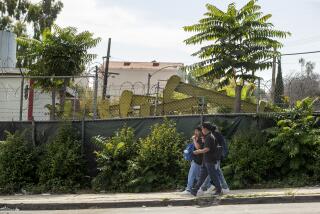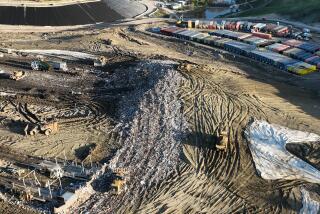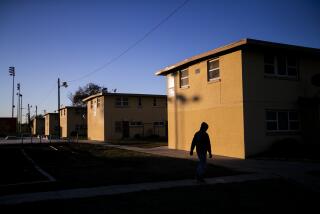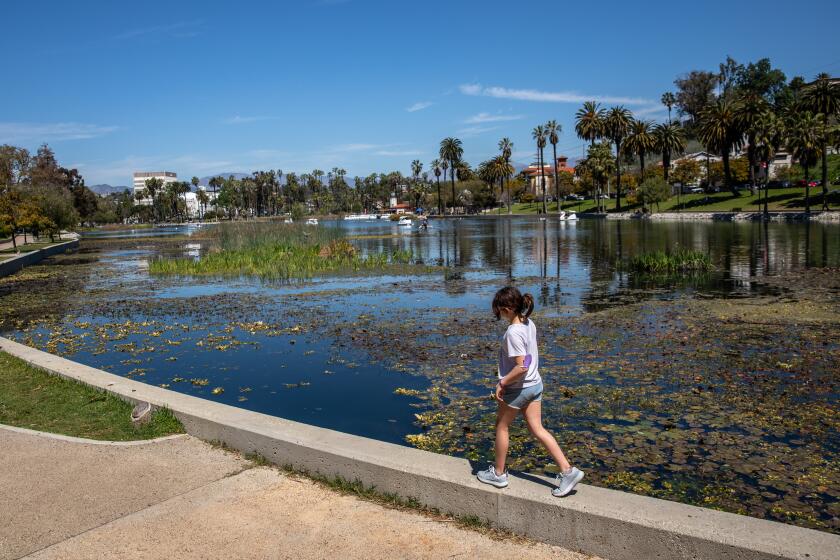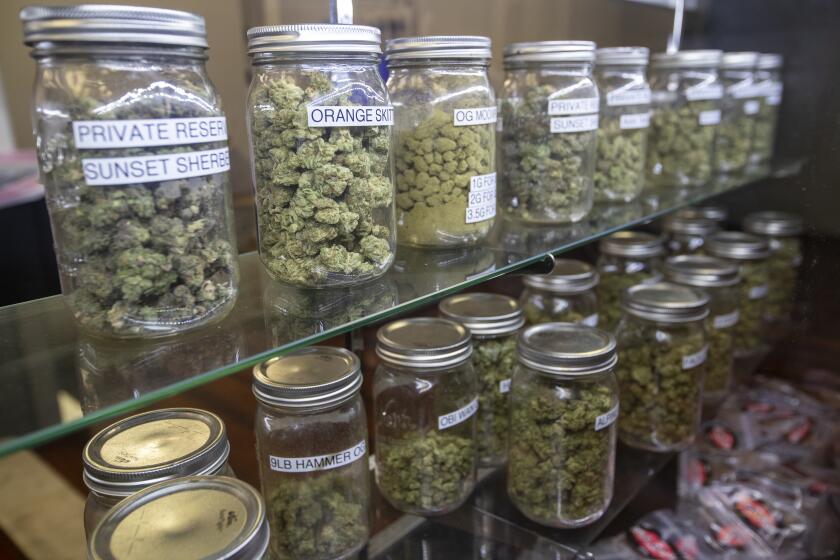Activists urge L.A. City Council to ban fracking and acidizing
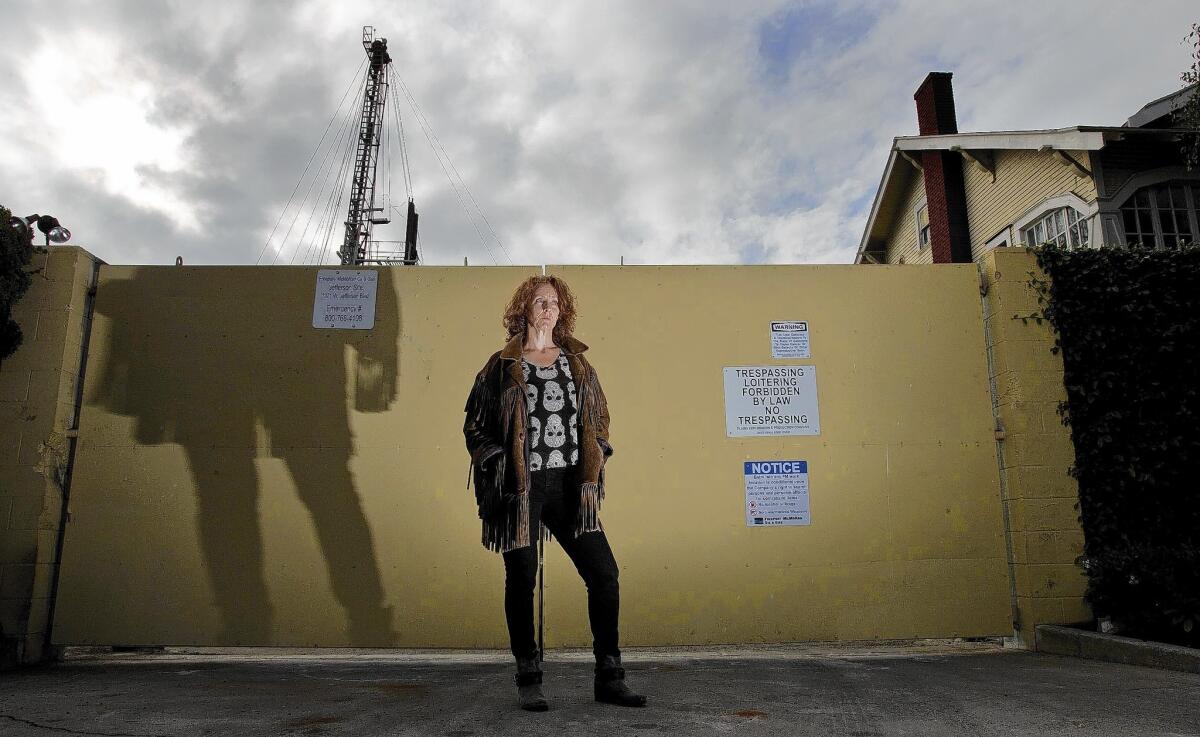
In the morning while walking to her car, Michelle Kennedy sometimes detects a smell like cat urine. The asthma her 6-year-old suffers seems to have worsened.
Kennedy blames the oil and gas wells pumping in and near her South Los Angeles neighborhood. She was especially troubled to hear that acid was being injected in some shafts roughly a mile from her home.
Now Los Angeles could put a stop to several practices that Kennedy and her neighbors have lobbied against, at least inside its city limits. The City Council will discuss Friday whether to start drafting rules that prohibit all forms of “well stimulation” until they are sure that Angelenos and the water they drink are safe.
Environmental activists argue that acidizing, hydraulic fracturing and other controversial methods used to coax oil and gas from wells can taint water or trigger earthquakes when wastewater is injected back underground. Under an existing proposal backed by several council members, such technologies would be barred until state and federal regulations adequately protect people from their effects.
“We can’t allow the safety of our neighborhoods that we represent to be jeopardized by dangerous drilling,” Councilman Mike Bonin said at a packed committee meeting on Tuesday.
Hydraulic fracturing, often referred to as fracking, uses injections of water mixed with chemicals to break up underground rock, freeing oil and natural gas trapped in the shale. Local activists point to health complaints and cracking walls in homes close to county wells where fracking has already taken place.
Acidizing, which appears to be more common in the city, routinely uses chemicals including hydrochloric and hydrofluoric acid. Such chemicals can harm the skin and eyes, as well as respiratory and other bodily systems, said Angela Johnson Meszaros, general counsel for Physicians for Social Responsibility-Los Angeles. To stimulate production, “tens of thousands of pounds of acid are being pumped into these wells,” she said.
When a neighbor told Lillian Marenco that acid had been used at nearby wells, she clapped her hands over her cheeks. “Oh, God,” she said. A pungent smell lingers over the South Los Angeles home where Marenco lovingly tends her garden, down the block from a Jefferson Boulevard drilling site.
Acid has been used for “well stimulation” there in the last year, according to data reported to the South Coast Air Quality Management District. But disagreements swirl over what that means. The company that operates those wells, Freeport-McMoRan, says it undertook “routine maintenance operations” using low volumes of acid, not “acidizing” as activists have insisted.
The debate underscores a key question the city will face if it crafts an ordinance: How exactly to word it.
The “generic scope” of the existing Los Angeles proposal “could prohibit even routine well maintenance activities needed to ensure the mechanical integrity of wells and maintain conventional oil production,” Freeport-McMoRan spokesman Eric Kinneberg wrote in an email to The Times.
Oil and gas companies argue that fracking and other well stimulation technologies are safe, proven ways to yield more energy and generate jobs. Nick Ortiz of the Western States Petroleum Assn. told council members at the Tuesday meeting that such methods had “never been associated with any confirmed case of groundwater contamination.” Business groups such as the Valley Industry and Commerce Assn. also contended that Los Angeles doesn’t need to roll out new rules because California lawmakers passed regulations on fracking last year.
“This is a solution looking for a problem,” said Rock Zierman, chief executive of the California Independent Petroleum Assn. He pointed to a yearlong study of the Inglewood Oil Field, which found that hydraulic fracturing there had no effect on the environment or the health of people living nearby.
Environmental watchdogs countered that the Inglewood study failed to examine risks in the long term, such as chemicals possibly sullying groundwater. Other research has raised concerns, including a study published last year in the Proceedings of the National Academy of Sciences, which found much higher levels of methane in drinking water wells close to fracking operations in Pennsylvania. As for the state regulations mentioned by business groups, environmentalists say they didn’t go far enough.
Under the new state law, “we’re basically telling people, ‘Let yourself be guinea pigs and we’ll study this. If this is a problem, we’ll tell you after the fact,’” said Brenna Norton, Southern California organizer for the environmental group Food & Water Watch.
If Los Angeles halts fracking and other well stimulation, it will be the first oil-producing city in California to ban the technologies, according to Zierman. Other cities and counties have already thrown their support to a statewide ban or moratorium, including Carson and Culver City.
Many local wells that use such techniques lie outside the city limits: Data reported to the air quality district since last summer show that acidizing, gravel packing or hydraulic fracturing have been used in at least 218 wells in the county, but only 17 are in the city of Los Angeles, according to a Times analysis. None of the city wells reported any hydraulic fracturing during that period.
People on both sides of the debate raise questions about the data: Zierman said the air quality district inaccurately categorizes the use of acid in “routine maintenance” as “acidizing.” Environmental activists, meanwhile, think the data may be incomplete since it is reported by the oil and gas companies themselves.
The numbers underscore that for areas like Baldwin Hills near the Inglewood Oil Field, “it wouldn’t do much until the county steps up and does something,” said Gary Gless, president of Citizens Coalition for a Safe Community. “But I think it will put pressure on the county to do the right thing.” Backers say a Los Angeles ban would also help spur a statewide moratorium.
Los Angeles currently has 1,880 active and 2,932 abandoned oil and gas wells, according to the state Department of Conservation. Zierman argued that preventing techniques such as acidizing could eventually push drilling away entirely, since “we have to be constantly reworking those wells to keep production up.”
That sounds fine to some activists, who see drilling as incompatible with dense residential neighborhoods. “We’re thinking they’ll pack up and go home,” said DonnaAnn Ward, a West Adams resident and founder of the grass-roots group Cowatching Oil L.A. Without tools like fracking, “there’s no money in it.”
Times staff writer Doug Smith contributed to this report.
More to Read
Sign up for Essential California
The most important California stories and recommendations in your inbox every morning.
You may occasionally receive promotional content from the Los Angeles Times.
